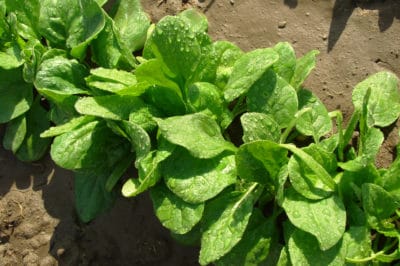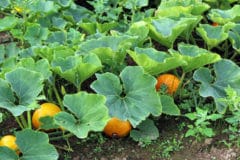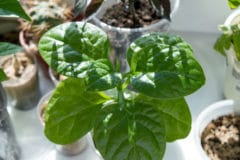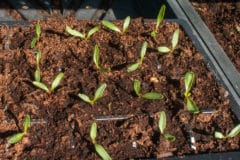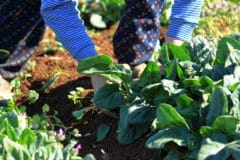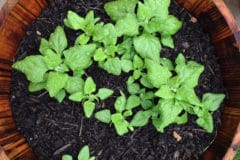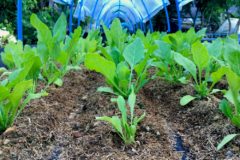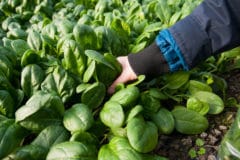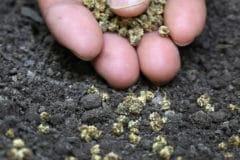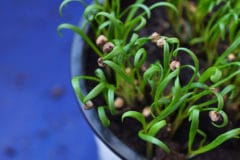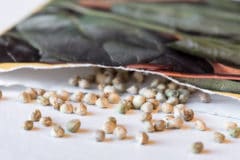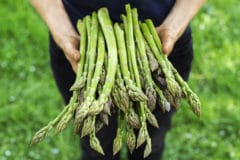What is the best season for growing spinach?
Plant spinach during the cool parts of the year. You can start seeds indoors about four weeks before the last frost date for your area, or, sow seeds from late August through the end of fall. While mature spinach plants often survive under mulch down to temperatures as low as 27ºF (-2.7C), they germinate and grow best in a temperature range between 40º to 75ºF (4.4º to 24ºC).
How long does it take spinach to grow?
Mature spinach plants are ready for harvest in as little as 25 days after germination, and longer growing varieties are almost always finished in less than 60 days. But, you can harvest spinach at almost any point in its growth cycle.
What kind of soil does spinach grow in?
Spinach likes a soil with a pH level of 6.5 to 7.5, and it prefers fertile, well-drained soil. Add compost or decomposed manure to make the soil fertile and to provide better drainage, and adjust the soil pH level as needed.
How much water does spinach need?
Keep the soil continuously moist for germinating spinach seeds, seedlings, and growing plants. Dry conditions cause the plants to prematurely go to seed. However, soggy soil can lead to damping-off disease, so avoid over-watering.
How far apart do you plant spinach seeds?
It depends on what variety you are growing and whether you are going to let the plants grow to full-size or harvest baby spinach. Check the seed package for specific instructions for the cultivar you are planting.
However, as a general guideline, plant spinach seeds about ½ inch (1.3cm) deep at a spacing of 2 to 3 inches (5 to 7cm) apart within the rows, and space rows approximately 12 inches (30cm) apart. When the seedlings emerge, thin the plants in the rows to about 6 to 8 inches (15 to 20cm) apart.
How much light does spinach need to grow?
Spinach grows fastest in full-sun, but it will also grow just fine in partial shade. However, be sure the plants receive at least six hours of direct sun each day.
When do you fertilize spinach?
Because spinach grows so quickly, you usually do not need to fertilize it while it is growing. Instead, make sure the soil is fertile before you plant by adding a generous amount of compost or by mixing in an application of an organic fertilizer such as:
- Blood meal
- Fish meal
- Cottonseed meal
If plants begin yellowing while they grow and need additional fertilizer, use a dilute mixture of fish emulsion to give them a boost.
What are the different types of spinach?
There are three main types of spinach:
- Savoy spinach has crinkly leaves and is dark-green in color. Savoy spinach leaves are more prone to holding dirt and grit, but they are especially good for fresh eating, once cleaned.
- Smooth-leaf, also known as flat-leaf spinach, has larger, flatter leaves and is often used in dishes calling for cooked spinach. Use smooth-leaf spinach if you plan on freezing your crop.
- Semi-savoy is spinach, which is a hybrid of the other two types.
What is bolting and how do you prevent it?
Bolting refers to when a plant sends up a tall flower stalk and begins the reproductive phase of its life cycle. Spinach plants are especially prone to bolting if the soil dries-out and when temperatures go over 75ºF (24ºC), but they also bolt in excessively low temperatures and at the end of their vegetative growth cycle. Prevent bolting by planting at the right time of year, keeping the soil moist, and harvesting by the days-to-maturity date for the variety you are growing.
What kind of pests and diseases attack spinach?
The most common pests include:
- Cutworms eat the seedlings.
- Flea beetles eat holes in the leaves.
- Snails and slugs also eat holes in leaves.
- Aphids gather on leaves, making them unappetizing.
- Damping-off disease, which causes young plants to fall over and wilt.
- Downy mildew causes spots on leaves and a white fungal growth on the underneath of leaves.
The best control for pests on spinach is using fresh seeds when planting, not over-watering, using high-quality compost for fertilizer, and rotating the crop by planting it in a different area of the garden each season.
What is succession planting?
Succession planting means planting multiple crops several weeks apart. Because spinach grows fast, planting successive crops allows you to keep on harvesting as long as cool weather conditions prevail.
Can you grow spinach in containers?
Yes. Fast growing, compact spinach plants are especially well-suited for growing in containers.
How and when do you harvest spinach?
You can harvest spinach almost anytime during its growth cycle between the time the plants form a small rosette of leaves up to the time the plants begin to bolt.
What are good companion plants to grow with spinach?
Companion plants are those which give a boost to one another as they grow. This happens when the two plants require different nutrients from the soil, when one plant deters pests from the other, and when one plant provides shade or ground cover for the other.
An especially good companion for spinach is radish. Radish plants attract leaf miners pests to their leaves, but the edible radish root is unaffected. This keeps the leaf miners away from the spinach.
Other good companions for spinach include:
- Asparagus
- Cabbage family crops
- Dill
What is New Zealand spinach?
New Zealand spinach is not really spinach: It is actually a member of the fig family. It grows as a perennial vine in warm climates and as an annual in cooler areas. New Zealand spinach looks similar to spinach and has a somewhat similar flavor, but unlike real spinach, it thrives in hot weather. Therefore, it is a good substitute as a leafy green you can grow in summer.
Is spinach really good for you?
Spinach contains significant amounts of many important nutrients, including:
- Vitamins A, C, E, and K
- Thiamin, vitamin B6, and niacin
- Folate
- The minerals iron, copper, manganese, and potassium
- Dietary fiber
Spinach is also low in calories and has no cholesterol or saturated fats. However, spinach does contain significant amounts of oxalic acid, a naturally occurring substance with a sour taste and which binds with calcium, preventing its absorption. Cooking spinach breaks down the oxalic acid.
How do you keep spinach after harvest?
Spinach should be kept in a plastic bag in the refrigerator after harvest. If the leaves are wet, they will turn dark quickly, so either wash and completely dry your spinach leaves before you put them in the fridge, or wash them before you use them. Dry, refrigerated spinach leaves can last up to a week, but are usually best if eaten within five days.
